Why Choose My Everest Trip?
- Best Price Guarantee
- Secured Payment System
- Tailored and Personalized Itinerary
- 70% repeat customers, delivering consistently unforgettable experiences every time.
Nepal
12 Days
$1,250
This trip includes
Ground transportation in Nepal
Hotels & tea-house accommodation
All meals except in Kathmandu
Local flights cost covered in itinerary
Guided tour & trek throughout the trip
Everest Base Camp Trek is one of Nepal’s most adventurous and popular treks. With a well-maintained path and raw beauty, this trek is mainly recognized for its awe-inspiring scenery and welcoming Sherpa people. The trek takes you to the foot of the world’s highest mountain, Mount Everest.
Are you more curious about the Everest trek and planning it for your next trip? Wondering about the best travel agency and itinerary provided? Booking the Everest Trek with us can be a wise choice.
Trekking to Everest Base Camp offers stunning views of mountains, glaciers, monasteries, and villages. Base Camp Trek (EBC Trek) is at the absolute pinnacle of all the Himalayan adventures in the world. Everest trekking explores the beautiful Khumbu Valley. Mountains like Mt. Everest (8849m), Lhotse (8516m), and Cho Oyu (8201m) welcome you to the glorious land of the Sherpas.
The trek is also popularly known as a teahouse trek, as you will stay at some of the highest villages in the world and closely examine their culture and traditions. Also, this trek is perfect if you want to explore the remote villages of Nepal. Besides, the trek is also popular for the warm and welcoming hospitality of the Sherpa people. Throughout the trial, you will pass through many ancient monasteries and chortens amidst the Himalayas.
The 12-day EBC trek is a safe and comfortable option for hiking to Kalapathar and Everest Base Camp. The walk can be challenging. However, the wonderful scenery of verdant forests, farmland, hills, and mountains will inspire you to keep going. Trekking can be the finest option for experiencing the natural thrill. Just make sure you prepare well and choose the best planning along with a reputable trekking company.
We offer daily departure based on your request and Groups joining the Everest Base Camp. You can check our departure dates and contact us. If you have your group and would like to arrange a private trek, feel free to book with our booking firm. Contact us via email: [email protected]
| No. of Tourists | Price Per Person in USD |
|---|---|
| 1 Paxes | $1350 |
| 2 - 10 Paxes | $1250 |
Everest base camp trekket var en fantastisk oplevelse. Ruten, naturen, kulturen og alle historierne der er knyttet til det legendariske Mount Everest. Min søster og jeg var slet ikke forberedt på at vi ville blive så meget blæst bagover af denne fantastiske rejse. Vi fandt My Everest Trip på internettet og bookede turen via hjemmesiden, det var utrolig enkelt og vi havde under hele processen en god dialog med ejeren af bureauet, så vi hele tiden var opdateret og kunne stille alle de spørgsmål der meldte sig. Bureauet bruger kun certificerede guider og forsikrede portere, hvilket giver en stor tryghed. I det hele taget er nepaleserne utrolig venlige og servicemindede og vi kan ikke sætte en finger på den service der blev ydet os under hele vores ophold i Nepal, ikke kun på selve trekket, men også både før og efter. Trekket var godt tilrettelagt, dagene planlagt så sikkerheden altid var i højsædet og vores guide var virkelig dygtig til sit arbejde. At vandre i Himalaya er en oplevelse for livet. Dagene er fulde af indtryk fra de smukke omgivelser, men i høj grad også en indre rejse, hvor man virkelig kommer til at tænke over livet og hvad der har betydning, det var helt utroligt som vi rykkede os mentalt. Den nepalesiske tilgang til livet smitter af på én og som dagene gik, blev vi bedre og bedre til at være til stede i nuet og takle små forhindringer når de dukkede op. En stor tak skal lyde til bureauet for at give os denne fantastiske oplevelse og vi giver dem vores varmeste anbefalinger
William
Denmark, Copenhagen
In mid-November 2021, I went on a tour of Everest Base Camp Trek with My Everest Trip. I was a little worried because I had never been trekking in my life ... but I did a survey and found a Puru who is run a trekking company in Nepal, so after much thought, I decided to go with them. In the beginning, I contacted Puru, the company's Manager I was very satisfied with his interaction and communication with me. I had so many questions and worries about the trip and he was able to guide me and answer all my questions The process on board was smooth and easy. When I arrived in Nepal, I found that everything was ready from the person who picked me up from the airport to the hotel, some equipment for the trip, a complete introductory meeting about what to expect from the trip, All land transport, and even before I left Nepal for a walk. I'm really glad I made him my guide. a very unique person. he is more than a guide .. he is also a good friend, he made sure I enjoyed it. he still shares his expertise in the mountains, Sherpas, and Nepalese culture. . he always supported me, even on days that I had a hard time due to altitude sickness. he encouraged me and inspired me not to give up our life journey, he always emphasized health and safety first. Despite all the challenges of the trek to Everest Base Camp Trek but I'm so glad I did it and I did it with a very good group of people on My Everest Trip. I highly recommend My Everest Trip if anyone looking for a trek in Nepal.
Jennifer
USA
Flights can be delayed or cancelled due to bad weather, crowded airports, runway problems, and challenging terrain. To be safe, consider adding 2 extra days to your plans in case of delays so you don’t miss your international flight back home.
Peak Season (March, April, May, October, November):
Non-Peak Season (January, February, June, July, August, September, December):
The glorious adventure trek to Mt Everest base camp begins from Kathmandu with a flight to Lukla. The trail follows the beautiful Dudh Koshi River to Phakding. You will embrace the warm welcome of Sherpa culture. The trek heads to Monjo before reaching the entrance of the Sagarmatha National Park.
The trek’s next destination is Namche Bazaar, Khumbu Valley’s trade hub. Here, you spend an extra day acclimatizing and exploring the riches in and around Namche. Then, you ascend deep into Khumbu Valley alongside the Imja River. You will pass Sherpa villages like Tengboche and Pheriche in the company of Mt. Ama Dablam (6856m) and begin trekking north.
The altitude keeps increasing as you follow the lead of Khumbu Glacier past Lobuche to Gorakshep. Finally, the trip climaxes with a short hike to Everest Base Camp (5364m) and another one from Kalapatthar’s viewpoint. After enjoying the glorious parade of mountains, the return trek begins.
The journey back to Lukla descends past sharp stone trails and glaciers to join frequent Sherpa settlements. Further, you continue to retrace your steps to Lukla and take a flight back to Kathmandu.
Packing for Everest Base Camp requires careful consideration. The high altitude and challenging terrain are the main reasons for it. Here is a concise 12-day packing list:
Clothing:
Footwear:
Gear:
Miscellaneous:
Everest Base Camp is arguably one of the most fabulous trips in the Himalayas of Nepal. However, exploring the majestic Khumbu Valley and other nearby trekking locations is not the only option. Thus, the Everest region offers a variety of treks that cater to travellers’ needs. Everest View Trek, Tengboche Monastery Trek, and Everest Panorama Trek are short and easy treks in the region.
Similarly, there are plenty of arduous ventures, including the Everest Three Passes Trek, the Jiri to EBC Trek, and the Gokyo Chola Pass Trek. Moreover, the treks that traverse the Makalu region to join the EBC trail are even more challenging. As such, Sherpani Col Pass Trek and Makalu to Everest via 3 Cols span both Everest and Makalu regions. All in all, Everest Trekking is the perfect script for your thirst for Himalayan adventure.
To have the best trekking experience, hikers must explore high-altitude parts of northern Nepal during specific seasons. From September to November, autumn is the best time to trek Everest base camp. This season offers clear skies to relish the Himalayas and moderate temperatures in the high-altitude areas.
Similarly, spring from March to May is also one of the best seasons for EBC Trek. This season is more famous for the vibrant vegetation and abundant wildlife across the Sagarmatha National Park.
Although trekking is possible during the winter and summer/ monsoon, the weather conditions are worse. The tea houses at higher altitudes rarely operate due to the adverse climate. Short Everest Trek is possible throughout the year.
Considered the best trekking season in Nepal, the EBC offers clear skies, stable weather, and vibrant autumn colors, making it an ideal trekking month. The trials are generally dried and more stable this season, providing easier and more comfortable hiking conditions.
Springs bring warmer temperatures, blooming rhododendrons, and the bustling atmosphere of the Everest climbing season. From March to May, you can expect clear skies. It allows for breathtaking views of the snow-capped peaks and surrounding landscapes. Although there can be occasional showers, the overall temperature is perfect for exploring this iconic destination.
There is a vast difference in altitude during the EBC Trek. The trip starts from the capital of Nepal, Kathmandu, at 1,300 meters above sea level. A short and scenic flight takes you to the gateway to Mount Everest at Lukla (2840m). Then, it descends a bit to Phakding at 2610 meters. It climbs to Namche Bazaar at 2440 m, where you often rest to get used to the higher altitude.
Next, the trial climbs to Tegnoche at 38,70 m, Digboche at 4140 m, and Lobuche at 4910 m. Finally, you reach Gorak Shep at 5164 m, the last stop, before reaching Everest Base Cam at 5364 meters. It is important to take it slow to avoid altitude sickness and enjoy the stunning views.
Many factors affect the total cost of trekking to the Everest base camp. It also depends on the season you pick for the trek. The luxury Everest base camp trek provides good accommodation, meals, and unexpected events.
Trekking to Everest Base Camp costs between $1150 and $3500, depending on the package chosen. This figure includes the cost of guides, porters, and entrance permits while trekking in the region. The trip costs include accommodation, meals, cross-country flights, ground transportation, and other essentials.
The cost of hiking to Everest base camp depends on the trek’s standard. The most popular standards for the trek include:
Other factors influencing the Everest Trek cost include:
Choosing a Nepal trekking agency is smart because they offer expertise, experienced guides, and a support network to ensure a safe and enjoyable trekking experience. Their regional knowledge can provide valuable insights and assistance throughout the journey.
Additionally, a trekking agency can handle permits, safety protocols, and emergency response, giving you peace of mind. They customize itineraries to fit individual preferences and support the local economy by employing local guides and staff. Overall, a Nepal trekking agency provides convenience, safety, and a chance to explore the Himalayas confidently.
Travel experts in Nepal have graded the difficulty of the Everest Base Camp as “moderate.” This means you will need outstanding fitness for walking 6 to 7 hours daily for about a week. However, there’s no need for mountain climbing skills and gear to complete this trek. Any person with good physical and mental fitness can complete this trek with a few months of preparation.
You must engage in cardio exercises such as running, jogging, swimming, and cycling two to three months before the trek. It helps to boost your stamina before you head for the tour. It’s easier than the Everest Three Pass Trek. The significant difficulty of base camp treks is due to distance and altitude. Everest Base Camp’s distance is about 150 km, and you will cover this distance for eight days. This means you will be walking 15 to 20 km each day.
This makes 6 to 7 hours of daily walking, which demands good physical health. Along with distance, the altitude of the Everest base camp, 5300 M, and that of Kala Pathar are also significant challenges during the trek. Once you cross Namche Bazaar, you start to feel the pressure of low oxygen level, making your climb harder. Covering 500 to 1000m daily and including a rest day in the EBC Trek Itinerary dramatically helps you. However, this doesn’t mean you need oxygen for the Everest Base Camp.
The weather and temperature of Everest can also be an enormous EBC difficulty when travelling in the off-season of summer and winter. However, with the proper preparation, MyEverestTrip will help you overcome the difficulty of Everest Best Camp. We are committed to ensuring the comfort and safety of our trekkers.
Travel insurance for Everest Base Camp is essential for peace of mind and financial protection. It covers emergency medical expenses, including evacuation to a medical facility if needed. Insurance ensures you receive the necessary care in a remote area. Additionally, it provides coverage for trip cancellation and interruption.
Moreover, travel insurance includes baggage and personal belongings coverage, protecting you against loss, theft, or damage to your luggage during the trek. This coverage ensures you can replace essential items if you lose them or they get stolen while travelling. Furthermore, emergency assistance services are available 24/7, offering support such as medical referrals and travel assistance. Thus ensuring you have access to help whenever you need it.
Before purchasing travel insurance, carefully review the policy details to understand the coverage limits, exclusions, and any additional optional coverages available. Ensure that the policy covers trekking in high-altitude regions like Everest Base Camp. By getting travel insurance, you can confidently enjoy your trek, knowing it protects you from unexpected events that may occur during the journey.
Also known as acute mountain sickness, altitude sickness can occur when ascending to high altitudes too quickly. It results in a decrease in oxygen levels in the body. The symptoms typically include headache, nausea, dizziness, fatigue, and difficulty sleeping. To prevent and manage altitude sickness when trekking to EBC, follow these remedies:
Everest Trek is Nepal’s most famous tea house trekking region. If you are hearing this word for the first time, let us explain it first. A tea house is a local guest house made by the Sherpa people of Everest for trekkers. These basic hotels have two twin beds, a mattress, a small blanket, and a pillow.
However, as trekkers increase, developers are still building tea houses in this region. All the owners of the local places ( the amiable Sherpa people) commit to making eco-friendly and comfortable tourism on Everest, thus building a homely Everest Base Camp accommodation.
You can find luxury rooms with private bathrooms and WIFI up to Namche Bazaar. Usually, the bathroom at higher altitudes is Indian style, and guests share it during Everest Trek accommodations. Further, you must pay a few dollars more for the hot water shower. There are no plugs in the room, and you need to charge your phone in the reception by paying a few dollars for Everest accommodation.
Dal Bhat ( Nepalese Food ) – MyEverestTrip
During the EBC, the tea houses are where you spend your night preparing dinner and breakfast. As per the rule, you can only have your dinner in the hotels where you stay. You can get a variety of Indian, Chinese, and International cuisine for Everest food. You can order the food from the menu in the evening so they can prepare it early in the morning.
The most popular Everest food option is Dal Bhat, combining steamed rice, vegetable curry, and pulse soup. There are noodles, soups, pasta, rice, pizza, and sandwiches, and you are never out of options for food and snacks. Similarly, various options, such as coffee, chocolate, juice, and stiff drinks, are also available. Famous for over half a century, the chefs at the Hotel in Food Everest are good at preparing international food. Most vegetables grown locally are healthy, and many vegetarian options exist.
Since this is a once-in-a-lifetime journey, we highly suggest you try some local food prepared by the Sherpas in the Base Camp Trek. The local food includes Tibetan bread, Thukpa, Momo, and butter tea.
Trekkers often ask, “Do you need a Permit for Everest Base Camp?” and the answer is yes, You Do. To enter Nepal, you initially need your visa to Nepal. All travellers except Indians must issue a visa to enter Nepal, which is provided upon arrival at the airport or in Kathmandu. Along with the keys, you need two other Everest Trekking permits.
You must show an entry permit to enter the UNESCO Old Heritage site, i.e., Sagarmatha National Park. These $30 permits can be issued in Kathmandu, or you can publish them in one of the check posts. Most trekkers prefer to give both Everest Trek permits in Lukla. Read to know how to administer these Everest Permits.
The TIMS card previously used to track travellers entering the Everest base camp has now been changed into a local area permit. The Everest Base Camp permit Cost for this ruler rea permit is USD 20 and can be issued at Lukla Airport.
Note: Since MyEverestTrip takes care of all the permits and paperwork, you don’t need to worry about the permit.
While planning the Everest Base Camp Tour, trekkers must be aware of including a few contingency days. Owing to Lukla Airport’s high altitude and unique geographical location, it is a victim of abrupt weather changes. Due to this, the flights to and from Lukla are often delayed or canceled. Unforeseen weather conditions can also worsen the trekking trails, especially during winter and monsoon.
Similarly, accommodation is an integral part of any trek and even more so on the Everest tour. However, tea houses and other accommodations might be scarce in the higher regions. So, it is essential to book them beforehand or take necessary precautions. You might even have to share your room with fellow travelers during the peak trekking season.
Trekkers must also arrange their currency exchange and withdrawals before heading to the Everest region. While few banks and ATMs are at Namche, villages in higher altitudes do not offer similar services.
Here are some frequently asked questions for the 14-day Everest base camp trek or 12-day Everest trek.
Planning your Everest trip? Whether you book with a trekking company or have an experienced guide, it is essential for you to follow some basic rules for your safety and to make the most of the trip. Here are some useful tips to help you remain safe throughout the trek.
Planning a journey to Everest Base Camp with My Everest Trip. We are a Nepalese Travel and Trekking Agency based in Kathmandu. We have been operating in different trekking regions for over a decade, traveling with hundreds of travelers worldwide. We promise an unforgettable experience amidst the awe-inspiring Himalayas.
We have crafted a 12-day itinerary that delights adventure and nature enthusiasts. So, lace up your boots, pack your bag, and prepare for the trek with us.
Here are some significant benefits you gain while making your booking with us.
The Everest Base Camp Trek is a popular trekking route in the Everest (Solu-Khumbu) region of Nepal that takes you to the base camp of Mount Everest, the highest peak in the world.
Shower facilities are available at some teahouses along the trail, but they are essential, and the water may be cold. It’s recommended to bring wet wipes and baby wipes to refresh yourself during the trek.
Yes, charging facilities are available at some teahouses along the trail for a small fee. However, it’s a good idea to bring a power bank as backup, as electricity can be unreliable in the remote regions of Nepal.
The entire Everest Base Camp Route has been connected to the Internet. You can get Wi-Fi in all the tea houses up to Gorakshep, the last human settlement before the Everest base camp. However, the Wi-Fi connection costs USD 3 to 5 each night, and the speed is also not good. That is why most trekkers prefer to buy an Everest card to be brought to Lukla or Namche.
You can even buy an NCell sim card and use mobile data to access Everest Base Camp’s internet. Although you might not be able to load a heavy website, you can contact your friends and family back home.
Yes, a Solo trip to Everest base camp is possible. Since this is a top-rated trek, you meet many other trekkers in the trial. The route is also well-marked, with few chances of getting lost. The locals in the Himalayas are amiable and lovely. Although a solo Everest trek will be enjoyable, we don’t encourage trekking without a guide. Even if you travel alone from your country, we highly encourage hiring a guide. Solo trek for other Short Treks on Everest are also fun.
Legally, you need a trekking guide after the latest trekking rules in Nepal. Nepal has compulsorily-made guides that are required for trekking regions. So you need compulsorily a guide for Everest. However, this is a remote, unknown land where you might face many challenges. The locals and hotel owners don’t understand English, and you cannot find the hotels online. Also, you are unknown to the Everest Base Camp trek amp between the forest. The unique culture of the mountains might also be hard to understand. That is why hiring a guide is always the best solution.
If you’re looking for information about Everest Base Camp trekking costs, you’ll find plenty of resources available on our website. The cost of the EBC trek will depend on a variety of factors, such as the length of the trek, the season, the type of accommodation, the number of people in your group, and the type of guide you choose.
The Everest Base Camp is a challenging trek requiring good physical fitness and some previous hiking experience. The trek involves hiking for several hours and high altitudes of up to 5,364 meters (17,598 feet) and facing various weather conditions.
Essential equipment for the trek includes good-quality hiking boots, a warm sleeping bag, a waterproof jacket, a hat and gloves, a water bottle, and a personal first-aid kit.
Acclimatization is crucial for the Everest Base Camp Trek, as you will trek to high altitudes.
Trekking to Everest Base Camp is moderately challenging. It involves about 12 days of walking at high altitudes, ascending gradually to acclimatize. The trail passes through rugged terrain, suspension bridges, and varying weather conditions. Physical fitness and preparation are essential, but prior mountaineering experience is not required.
The trek to Everest Base Camp typically takes around 12 to 14 days round trip from Lukla, covering approximately 130 kilometres (80 miles). The duration can vary based on the route taken, individual fitness levels, and acclimatization needs. Trekkers usually spend 7 to 10 days ascending to Base Camp, allowing time for gradual altitude adjustment. The return journey typically takes 3 to 4 days, descending back to Lukla.
This trek offers breathtaking Himalayan landscapes, Sherpa culture experiences, and an opportunity to stand at the base of the world’s highest peak, making it a memorable adventure for those prepared for its challenges.
The best time to trek to the Everest Base Camp is from September to November and March to May. During these months, the weather and visibility are clear, making trekking and enjoying the scene easier
MyEverestTrip is a Nepalese Travel and Trekking Agency based in Kathmandu. We have been operating in different trekking regions for over a decade, traveling with hundreds of travelers worldwide.
With the pure intention to bring trekkers to Nepal’s safety and comfort, we have an entire team of travel planners, guides, and porters. We also have connections to hotels and restaurant lines all over Nepal to ensure that our trekkers get the best possible facilities.
So, here is the reason why you should travel with MyEverestTrip.
We have designed a well-planned Itinerary for all travel destinations around Nepal. However, this Itinerary is customizable as per the needs and requests of our trekkers. Just let us know when and how long you are staying so we can arrange the rest.
Although all travel agencies claim to have a good guide, many are not informed about the place you are traveling to. However, MyEverestTrip has its licensed guide in Nepal. They have been working in this field for over three decades, collecting all the information about the place/ culture and learning to keep the travelers safe. Also, our guide is good at the English language. We can even hire a guide who can speak Chinese and other European languages for trekking in Nepal upon special request.
MyEverestTrip has been known for its very economic trek packages in Nepal. You can compare the price we offer with any other travel agency in Nepal and only book with us if you are satisfied with our cost. We try to include all needed expenses during the tour so that you will not be overwhelmed with hidden expenses after the packages are booked.
Obviously, the safety of our trekkers and team is the utmost priority of MyEverestTrip. Our guide and porters who shall accompany you for the trip will have their insurance. We also encourage Travel insurance for our trekkers. Our treks and trips have been so designed that you only walk an appropriate distance. In any case of emergency, you will always have our back.
MyEverestTrip operates with the belief in responsible tourism. This includes
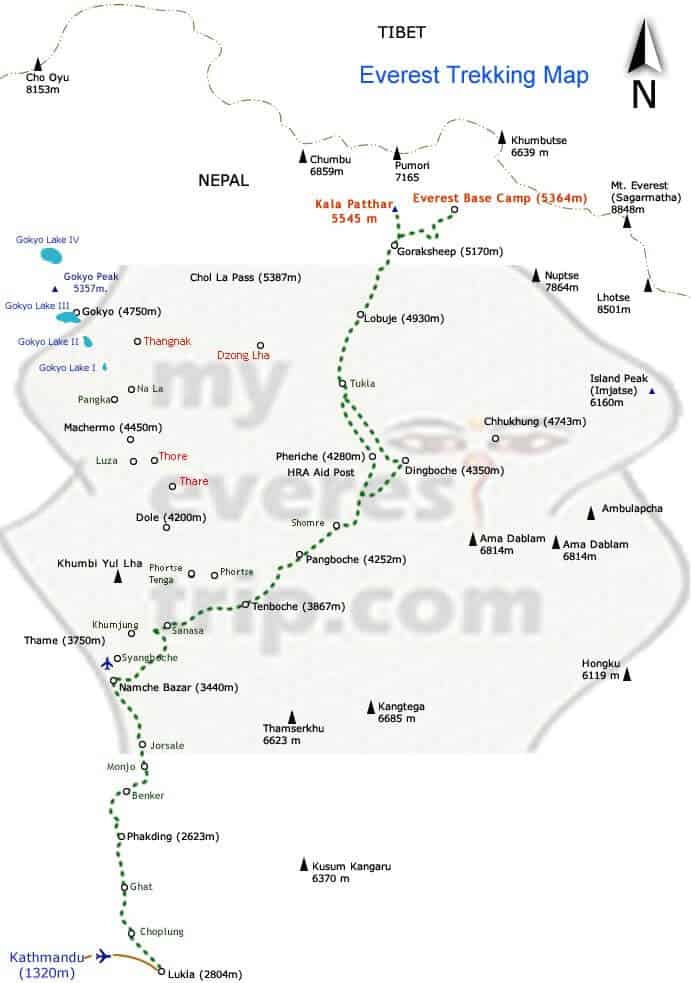
As per our map, you’ll start your journey from Kathmandu, the capital city of Nepal. From Kathmandu, you’ll fly to Lukla. Your trekking journey will start from here. With some ascending, you will reach Choplung. The next destination is Ghat, and from there, you will stop at Phakding.
You will spend the night in Phakding that day after covering around 3 hours and 8km from Lukla. After leaving, you’ll reach Benker, then Monjo, after that, Jorsale, and finally reach Namche Bazaar. After around 6 hours of walking from Phakding to Namche Bazaar, your next resting point will be there.
According to the map, your next journey is to Tenboche. The journey from Namche to Tenboche takes 5 hours and is 10 to 11km. To reach Dingboche, your next stop, you will go through Pangboche Shomre. As seen on Map from Dingboche, your next stop is Lobuche, where you’ll spend your other night. To reach Lobuche from Dingboche, you pass through Tukla.
Your next stop from Lobuche is direct Gorakshep. You’re on Everest base camp after reaching Gorakshep. It will take 8 hours to get to Gorakshep, Everest Base camp area. From Gorakshep, you’ll trek to Kalapatthat, the trek’s highest point. Kalapatthar is your final destination for the Everest base camp trek. The trek takes 7 hours overall and covers 13 to 14km.
Places of attractions, travel tips, news and more.
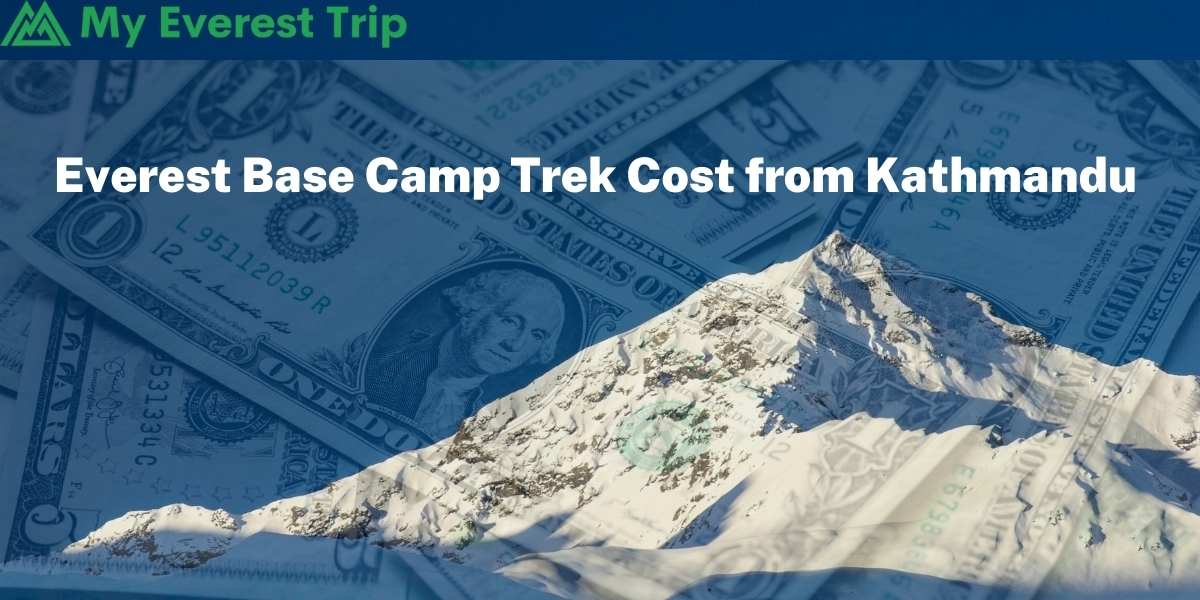
The Cost of the Everest Base Camp Trek depends on various factors, such as trekking season, the accommodation you want, and the food you want.…
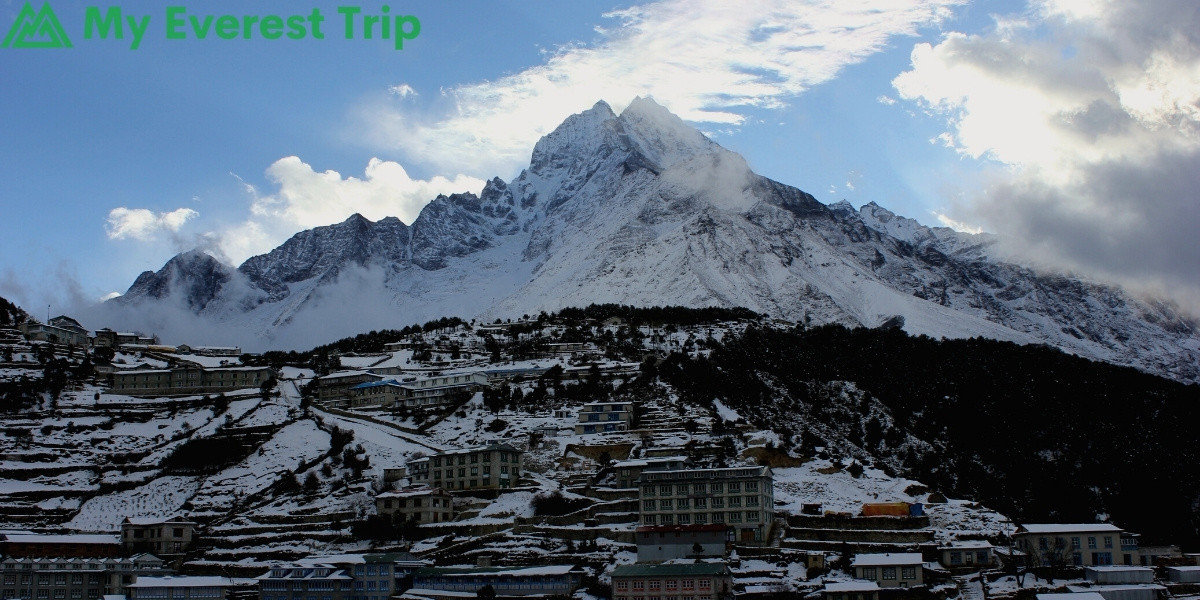
There are multiple transportation options available for traveling from Kathmandu to Namche Bazaar, including flights and private jeeps, offering travelers various routes to reach their…
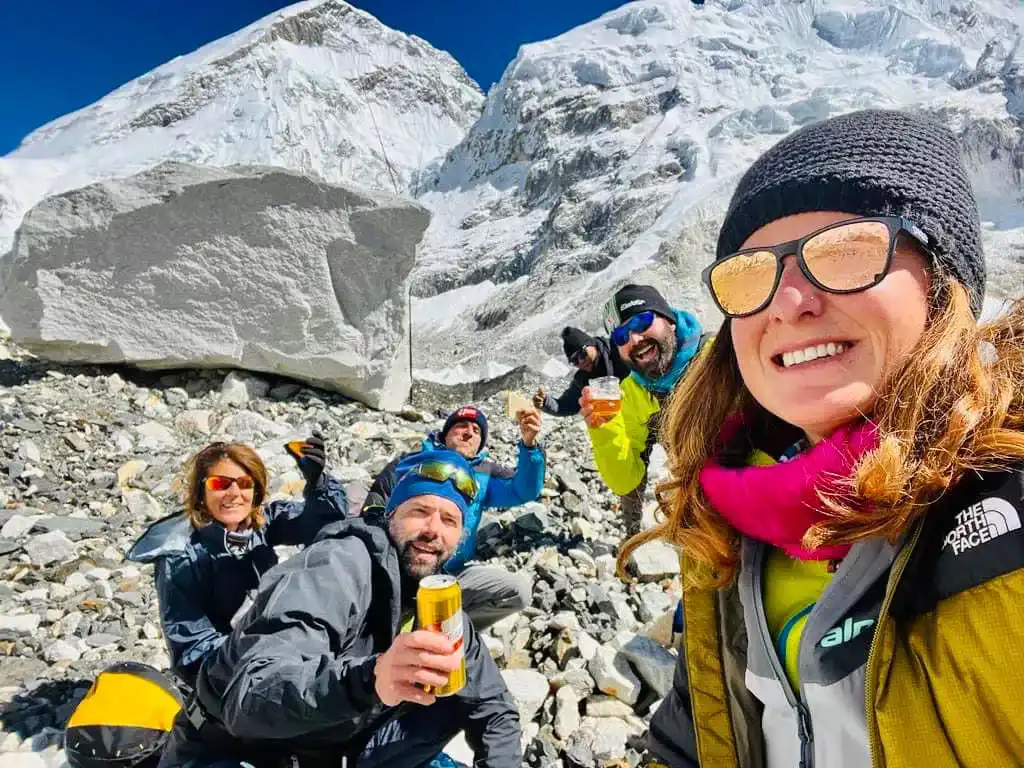
There might be hardly anyone who doesn’t know about the world’s highest alpine peak, Mt. Everest, which stands at an altitude of 8,848.86 meters (29,032…
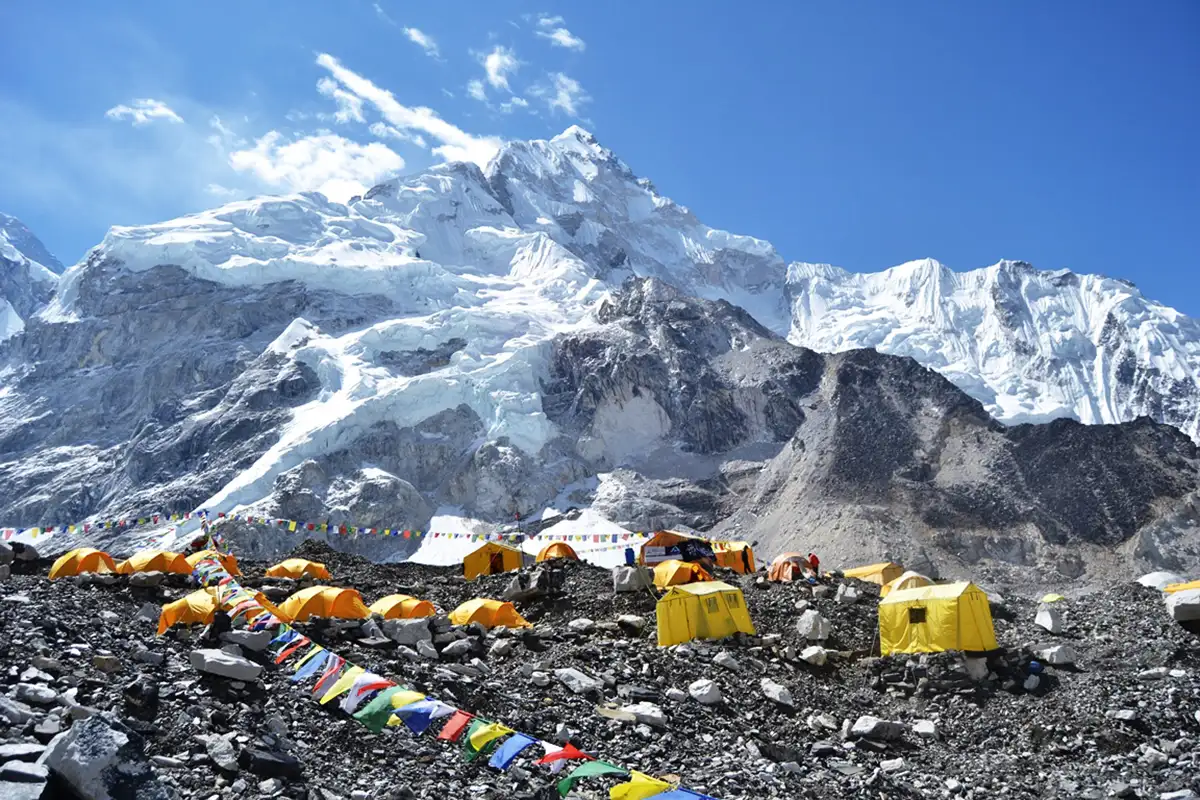
Everest Base Camp Trek From England For travelers looking to take the Everest Base Camp Trek from England, this article will serve as a comprehensive…